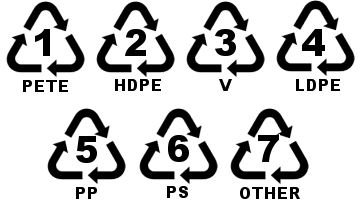How Long Does it Take Plastic to Decompose?
How long does it take plastic to decompose? Well, that depends on several factors including the type of plastic and the environmental conditions that the plastic is exposed to. But even before you take these factors into consideration, it must be understood that decomposition and photo degradation are two different processes and true plastics were, until recently, believed not to decompose but only photo degrade.
Plastic Decomposition vs. Photo Degradation
According to the Oxford Dictionary of Chemistry, decomposition is “the chemical breakdown of organic matter into its constituents by the action of bacteria,” while photo degradation is, “the process by which chemical bonds are broken down by photons in the sun’s light spectrum.”
Photo degradation is the process by which plastics are broken down because bacteria do not recognize the chemical compounds in plastics as food and therefore, don’t break them down like they do with organic materials.
Types of Plastic
There are seven types of plastic each with a code number; 1 - PET or PETE - Polyethylene Terephthalate, 2 - HDPE - High density Polyethylene, 3 - PVC - Polyvinyl Chloride, 4 - LDPE Low-density Polyethylene, 5 - PP - Polypropylene, 6 - PS - Polystyrene and 7 - Other Types.
PET(E) - This is the easiest plastic to recycle. Add to it that these materials are relatively cheap and you have the perfect container for soda bottles, water bottles, clamshell packaging, potato chip bags, produce bags and several other grocery-type packaging. Actual breakdown time for this type of plastic under perfect conditions can range from 5 to 10 years.
HDPE - This is probably the most recognized recyclable plastic and is used to make detergent bottles, bleach bottles, milk cartons, shampoo and conditioner bottles, motor oil and many other non-food items. These plastics will degrade in just under 100 years depending on the thickness of the plastic used.
PVC - PVC can be found in a number of items from pipes to children’s toys. PVC does not readily degrade and when it does it gives off a number of toxic materials. This is the single worst plastic according to several health organizations. Greenpeace has been lobbying to stop the use of PVC because of the dioxin produced during its manufacture.
LDPE Low - This is what our current plastic grocery bags are made of. If exposed to ultra violet light, these bags have been estimated to break down in as little as 500 years with a conservative average time of 1000 years. If there is no exposure to a light source, say at the bottom of a landfill, the plastic may remain intact indefinitely.
PP - This material is generally found in more permanent capacities such as rope, clothing and performed shower kits. It is highly resistant to photo degradation and will not decay for millennia.
PS - This is the plastic in Styrofoam packaging peanuts, cups, coolers and many other lightweight applications. This type of plastic will break down in under 50 years. The surface area exposed to sunlight will determine the exact rate as the more surface area will mean more photons reaching the plastic and a quicker photo degradation process.
Other Types - This includes anything not in codes one through six. Most plastics in this section do not breakdown and are considered permanently, chemically bonded.
Can Plastic Bags Be Broken Down Faster?
Now that you know the factors involved in the photo degradation process, you might be wondering how long does it take plastic to decompose under the optimal condition. In 2008, a young scientist named Daniel Burd, then a junior at Waterloo, Ontario High School degraded a common polyethylene grocery bag in three months. He did so by shredding the bag and mixing it with a compost tea made from water, yeast and landfill dirt. In it he isolated the bacterial genus Pseudomonas which was the first readily identified bacteria that consumes plastic. With the exponentially greater surface area of the shredded bag the microbes ate through it very quickly. The process has only two byproducts – water and a small amount of carbon dioxide.
References and Resources
Health News Digest "
Plastic Grocery Bags: How Long Does it Take to Decompose?" :
https://www.healthnewsdigest.com/news/Environment_380/Plastic_Grocery_Bags_How_Long_Does_it_Take_to_Decompose.shtml (accessed Feb 2011)
Slate.com “Will My Plastic Bag Still Be Here in 2507?” https://www.slate.com/id/2169287/ (accessed Feb 2011)
Fpintl.com “The Reality Behind Biodegradable Plastic Packaging Material” https://www.fpintl.com/resources/wp_biodegradable_plastics.htm (accessed Feb 2011)
Wired.com “Teen Decomposes Plastic Bag in Three Months”
https://www.wired.com/wiredscience/2008/05/teen-decomposes/ (accessed Feb 2011)
https://www.greenlivingtips.com/articles/187/1/Recycling-by-the-numbers.html
Image Courtesy of easy-green-living.org/recycle-plastic.html
